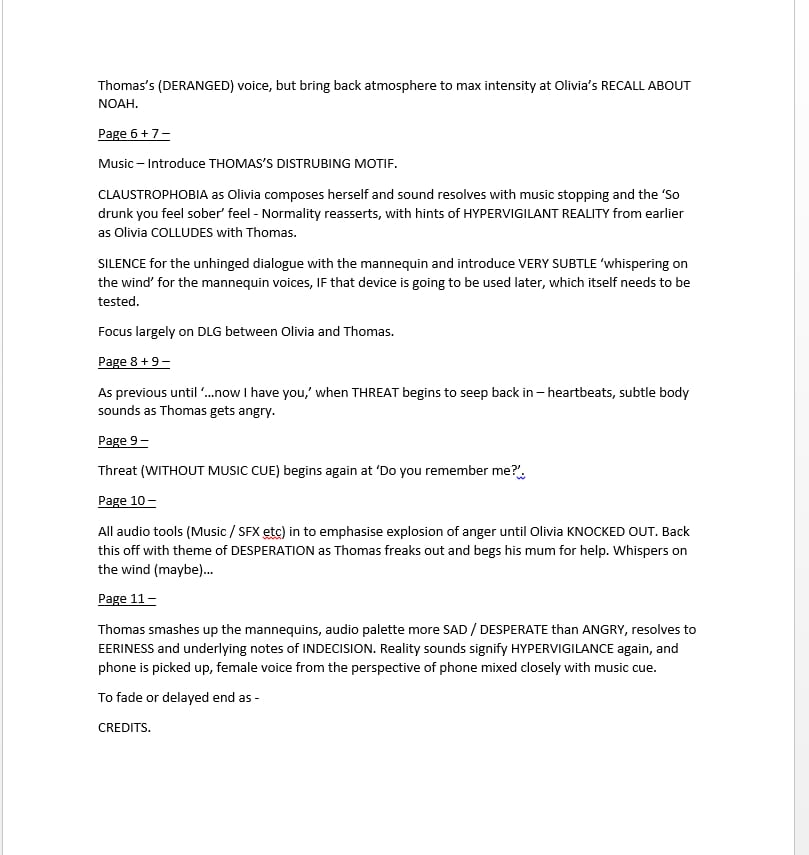(Outcomes – GR1, PER1]
“Customer feedback is so important because it provides marketers and business owners with insight that they can use to improve their business, products and/or overall customer experience.” – (clientheartbeat.com)
An audio production company like the one we’re simulating for the purpose of this project is a business, and customer feedback is similarly useful in this field as it is in many others.
Firstly, soliciting the perception of your client about the service you provide is a great way of gaining insight into how satisfied they are, how you can improve your service and how best to approach the client for repeat business. This is a critical feedback loop for strengthening relationships with existing clients and for garnering return business.
Secondly, they can be used to generate social proof, which is `…a powerful psychological phenomenon where people will behave similarly to the actions of others in an attempt to reflect correct behavior for a given situation…In today’s crowded world, where companies are vying for consumer attention, social proof plays an important part in the ability to reach new customers.’ (unbounce.com). In layman’s terms, this means that potential customers are more likely to choose you if they see other people are happy with your work and these are usually called testimonials.
As such, I thought it would be interesting to research the best method of soliciting this kind of feedback to some extent. [GR1]
I would envision this feedback process to be of most use when dealing with clients in corporate sectors such as advertising rather than with independent film-makers, for example. For the purpose of this project feedback is very useful however so I’ve developed a standard feedback document for OG Productions to be sent to all of our directors as we complete our projects, from which we can hopefully draw testimonials and derive client feedback for use in the academic marking process which can be found here –
http://www.smartsurvey.co.uk/s/8LKHK/
I researched a number of customer feedback documents on websites such as Questionpro.com to garner some insight into the kind of questions we might ask, and altered a standard Client Evaluation of Project template at SurveySmart.co.uk to better reflect our needs. The questions are a mix of multiple choice statements for qualitative feedback and open-ended text-box questions designed to garner feedback which will hopefully be useful as testimonials. It is a reasonably short survey because a complex document with a large number of questions will almost certainly get put to one side in the busy world of media industries, so simplicity and accessibility are key. This was also the reason I opted for the online option so the survey can simply be emailed to the production team at the appropriate time. [PER1]
In reality, I would likely split the feedback up into a survey concentrating more on the artistic side of the projects outcomes which would be best filled in by the director, and another concentrating more on the nuts and bolts of the production and services for the producers attention, but for the purpose of this project dealing with a number of small productions I feel it’s adequate enough to deal with both of these aspects in one document. The survey I’m presenting is also very corporate in tone which can sometimes be a disadvantage, and would likely not be deployed as a matter of course but more likely on a case by case basis taking into account the size of the production, any pre-existing relationship with the client and the way that relationship is conducted, and whether the client are themselves putting on a similarly corporate front.
————— 600 words
KEY POINTS –
Research into client feedback, methods and the logic thereof – Research
- [GR1] To professionally operate as a small to medium size company (or other recognisable business entity) in the audio production / post-production field might.
- [PER1] To develop a better understanding of the pros and cons of business structures, processes, regulations and agreements which might enable film audio producers to collaborate on multiple projects.
Construction of standard OG Audio client survey – Process Management
- [GR1] To professionally operate as a small to medium size company (or other recognisable business entity) in the audio production / post-production field might.
- [PER1] To develop a better understanding of the pros and cons of business structures, processes, regulations and agreements which might enable film audio producers to collaborate on multiple projects.
Reflection on potential real world uses – Individual reflection on learning and team role.

